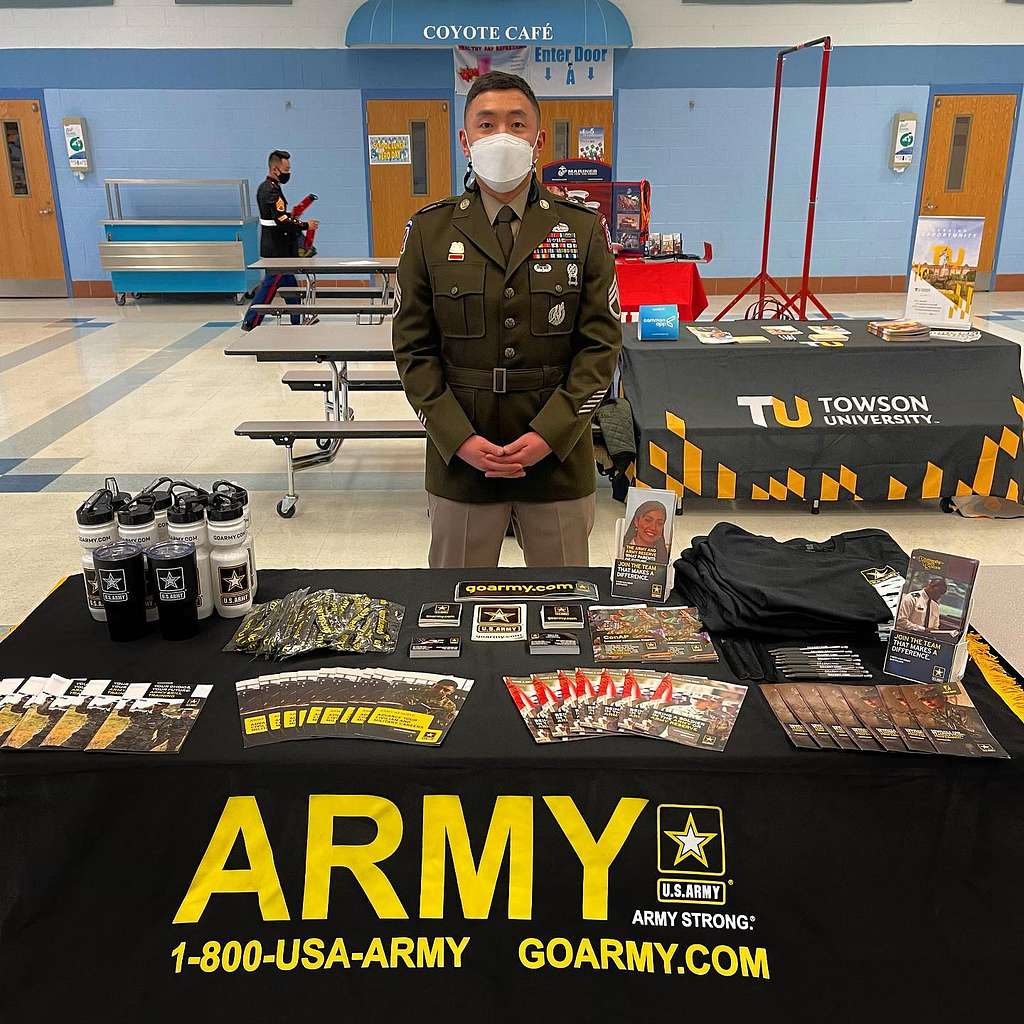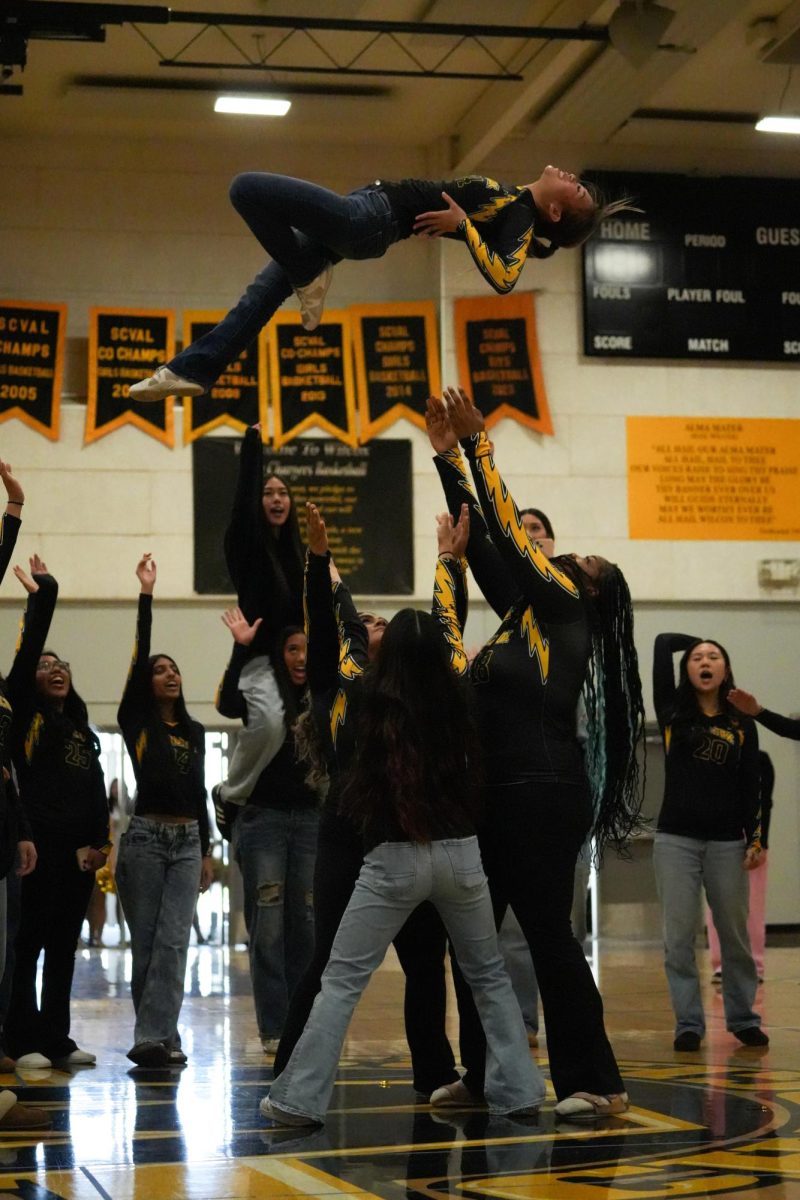A common occurrence in Wilcox’s quad during lunchtime are military recruiters. Recruiters can often be seen handing out merch such as camouflage lanyards with the recruiting website “goarmy.com” printed on and holding challenges of physical endurance such as plank holds or pull ups. The presence of recruiters has become a natural part of student’s lives nationwide, but it shouldn’t be.
A recruiter’s job description might seem straightforward by the name (to recruit), but there is a lot more to the story. As ambassadors for the military, they are responsible for depicting the military in the best light possible, showing off benefits such as free education, housing, cheap healthcare, and enlistment bonuses. Alongside that, enlisters are friendly, providing guidance, answering questions, conducting interviews and helping students assess their abilities to find them a job so that they can become part of the military community. However, their charm is simply a part of an act.
Recruiters are expected to meet quotas for the station they are assigned to and match their branch’s annual recruitment goal. These quotas contribute to the recruiter’s overall performance, which could lead to a promotion and bonuses if deemed rewardable. When asked about the consequences of not meeting quota, Staff Sergeant Jackson, a recruiter, said “You might get talked to, you might get disciplined, you might get a little bit of training.” The quota system is predatory as it gives an incentive for recruiters to sell the idea of enlisting further than just a simple promotion. With a number needing to be met, there needs to be a group who can be convinced to enlist.
US law prohibits anyone under the age of 18 from enlisting, seemingly protecting teens from making irrational decisions during a time where their brains are still developing. Despite the regulations, recruiters are allowed full access to high schools, where there are students as young as 14, via the No Child Left Behind Act of 2001 (NCLB). Under NCLB, recruiters are granted the right to request student contact information and “same access” to high school campuses as college and employment representatives; refusal by schools to grant access could lead to losing federal funding. Although NCLB was revised and replaced by the Every Student Succeeds Act in 2015, recruiter privileges have remained the same, with an exception of revoking a student’s right to opt out of having their information handed, now only caretakers can make that decision if the student is under 18.
Students are left exposed to the military sales pitch at a young age, years before they even reach their 20s where their prefrontal cortex, the part of their brain responsible for decision making, fully matures. At an age where teens aren’t even trusted to make risky decisions such as smoking and drinking, why are they constantly persuaded to enlist, a decision with significantly more life altering effects?
Recruiters take a hold of this naivete, promoting a perfectly crafted, romanticized image of serving and all the rewards that come with it. Many of the rewards promoted are trying to meet a student’s basic needs such as paying for a higher education. With one of the biggest appeals being financial benefits, recruiters weaponize desperation towards low income students. An example this was Hartford, Connecticut where an investigation by reporters Seth Kershner and Scott Harding found military recruiters visited a high school where nearly half of the students qualified for assistance for lunch food payments 10 times more than one in the area where only 5 percent of students qualified. A study conducted by the RAND corporation also found that students at public high schools with a Junior Reserve Officers’ Training Corps program relied on affordable lunches 10% more than those with a JROTC program.
Serving in any branch— whether Navy, Air Force or Army— is mentally taxing. The Armed Forces Health Surveillance Division’s December Medical Surveillance Monthly Report found mental illness among active duty members has been increasing from 2019-23. High rates of mental illness along with the stress of conflicts potentially suddenly arising has proven to be fatal even after leaving the force. According to the 2024 National Suicide Prevention annual report, veterans had 10.5% more suicide deaths than that of civilians from 2021-20. On top of mental health issues, veterans also have to deal with stress of unemployment as many struggle to apply military knowledge into civilian jobs.
The veteran unemployment rate has only been increasing. The Bureau of Labor Statistics reported that in December of 2024, 2.8% of veterans were unemployed however that statistic rocketed to 4.2% in January of 2025 while non-veteran unemployment decreased. Veterans have also not been met with adequate support for this situation. In fact, many services provided to veterans are being taken away as the Trump administration plans to cut 80,000 employees from Veteran Affairs, the agency responsible for healthcare and unemployment benefits for millions of veterans alongside being made up of 25% of veterans within itself.
The education system is tasked with teaching the next generation how to provide for themselves and to reach their fullest potential. But with the promotion of students potentially walking into a violent path they cannot fully understand, with no guarantee of their safety afterwards, built into the core of American schools, it cannot claim to be achieving its goal effectively. There is no way to raise the next generation when you put their lives and health at risk.







